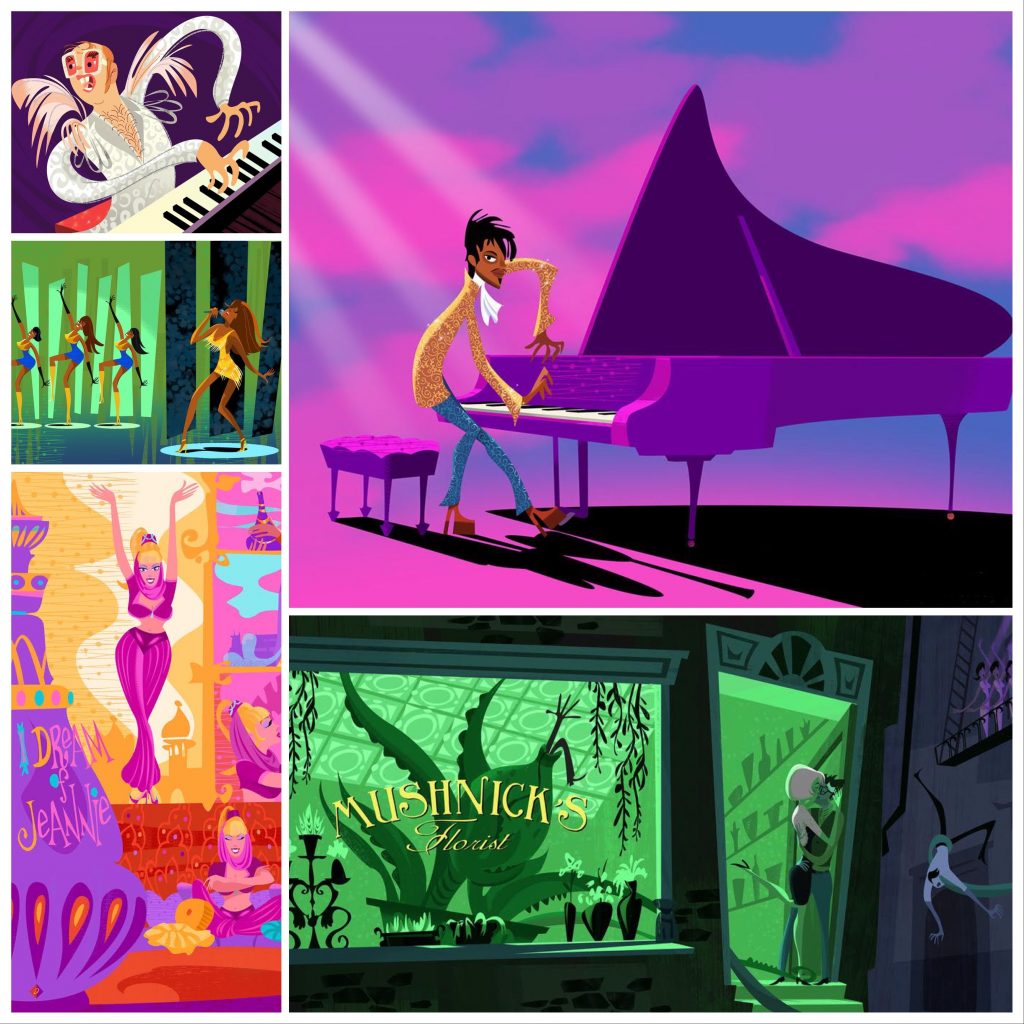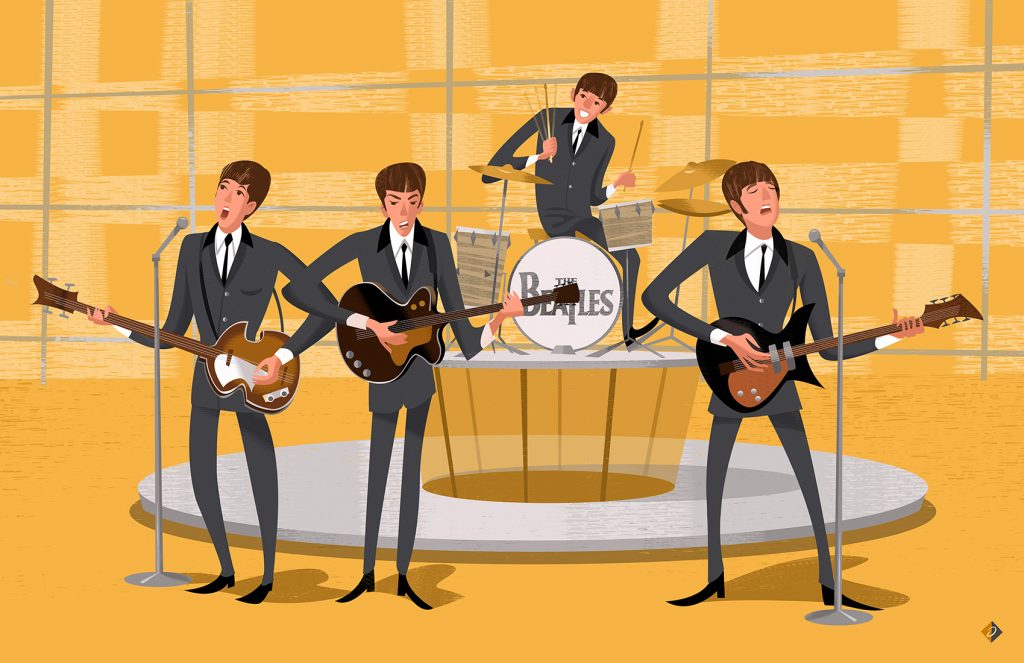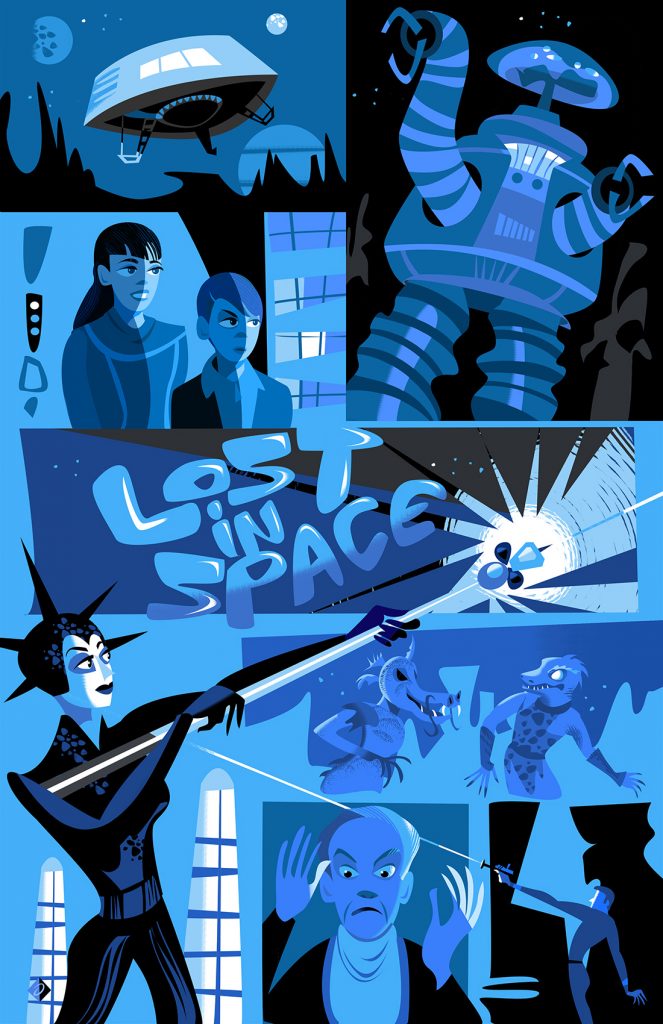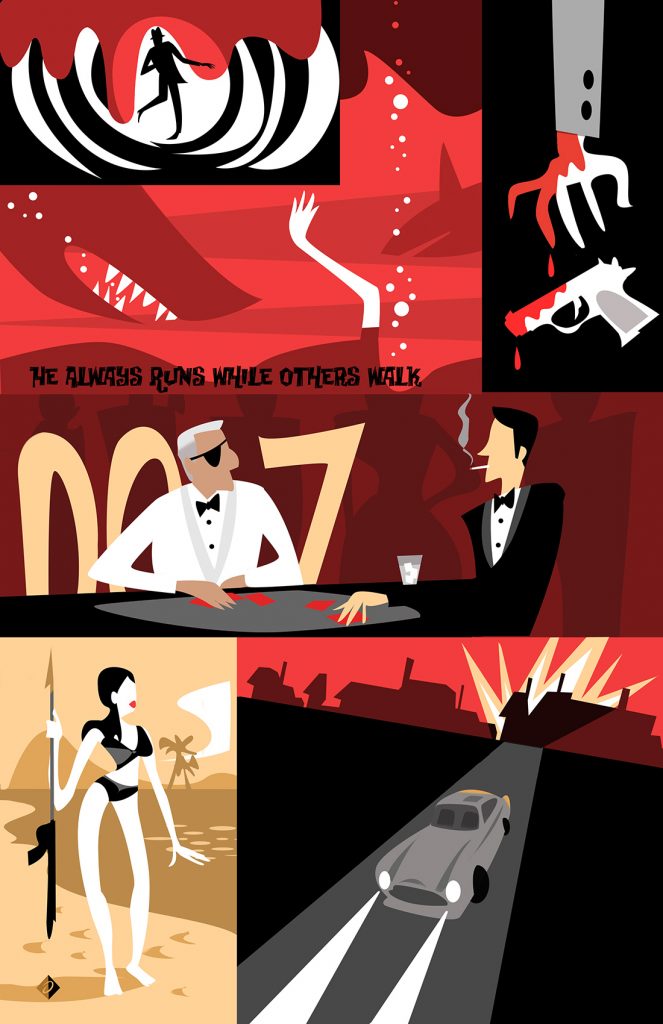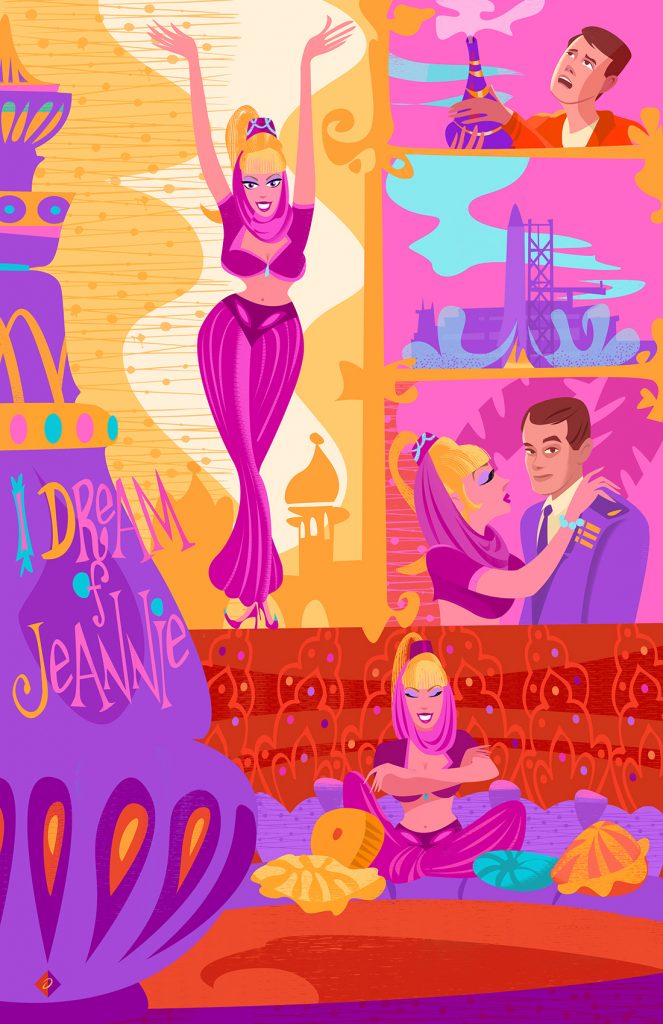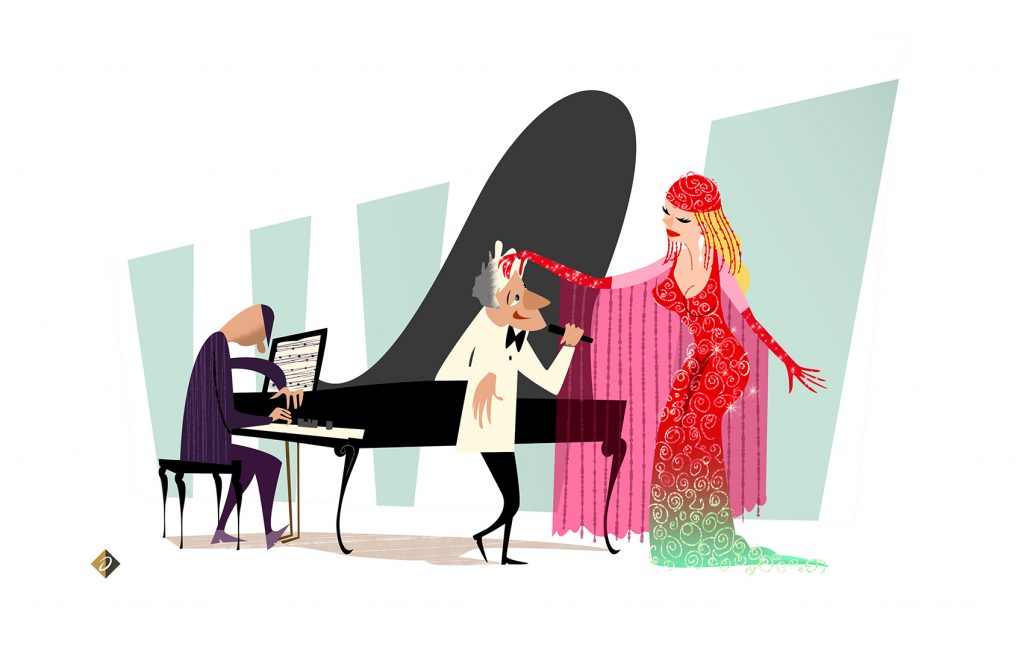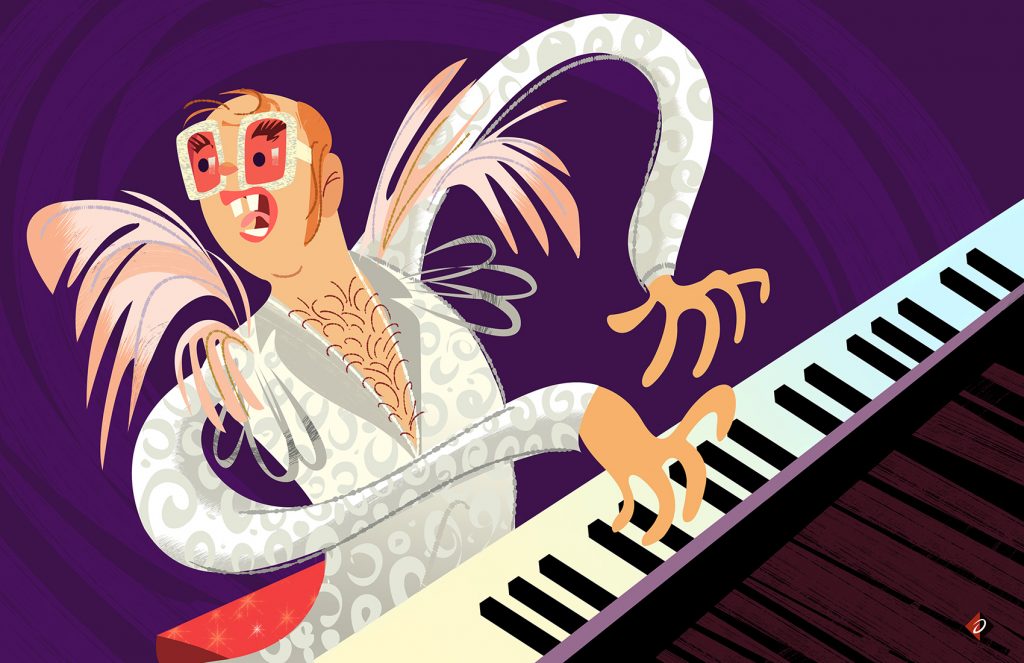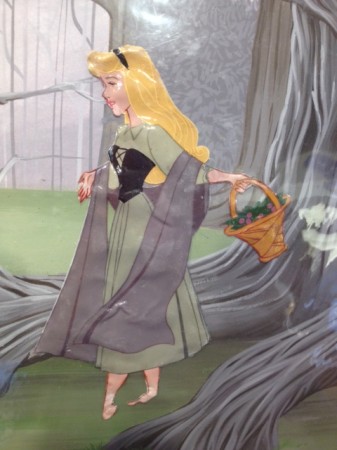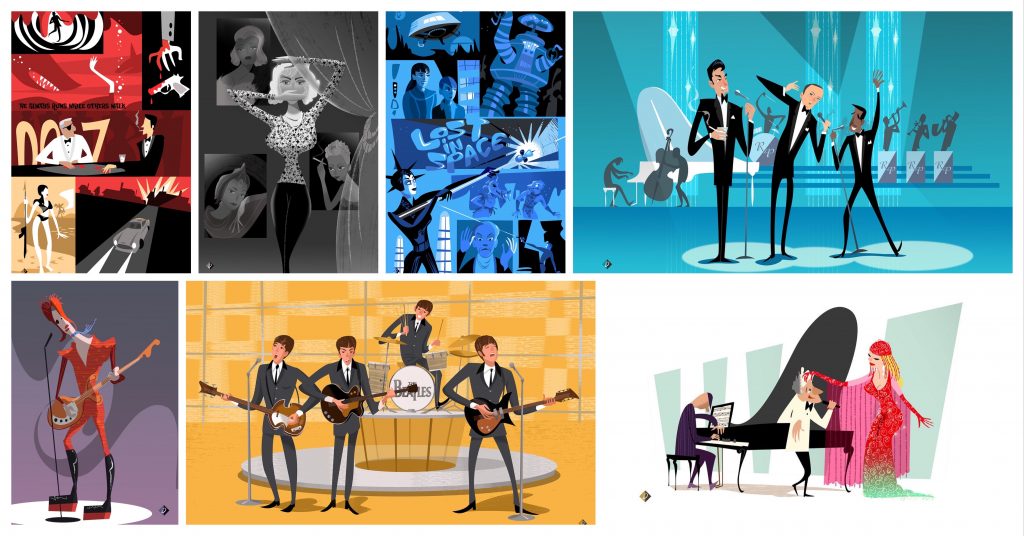
We’re incredibly excited to announce the art of Alan Bodner, which is inspired by mid-century modern design styles, is now available at ArtInsights. The first release will include limited editions featuring classic tv, great Broadway shows, and your favorite musicians from all genres. As you know, we are committed to highlighting artists that actually work in the industry. The art of Alan Bodner fits perfectly with that mandate.
To people in the animation and film industry, Alan Bodner needs no introduction. Fans best know him as the award-winning art director of animation projects as diverse as the Bugs Bunny short Carrotblanca, the cult classic animated feature film The Iron Giant, and Disney’s popular shows Kim Possible, and Tangled: The Series, for which he won a Daytime Emmy Award. Animation insiders, however, know Bodner well. He’s been working in Hollywood since his first gig as a background artist at Filmation. He started in 1979, with The New Adventures of Mighty Mouse and Heckle and Jeckle. The Tom and Jerry Comedy Show and Fat Albert and the Cosby Kids soon followed. He was destined for success.
If kids who grew up in the 80s and 90s were to list their favorite Saturday morning cartoons, no doubt he’s worked on a significant share of them. He lent his talents as background artist to Ghostbusters, She-Ra: Princess of Power, and a slew of Looney Tunes shorts. The wonderfully wacky Daffy Duck shorts Duxorcist, Quackbusters, and The Night of the Loving Duck number among his projects. In the 90s and into the new millennium, he painted backgrounds for Garfield, Rocko’s Modern Life, The Avengers, and Phineas and Ferb, just to name a few. Proving his range and skill with a wide variety of art styles, while developing a look of his own that would be recognizable, Bodner began getting hired as art director. In that position, he could dictate and orchestrate the look and feel of entire projects.
However, it wasn’t his art direction in animation that got him the gig as art director on The Iron Giant. Bodner had been at Warner Bros. Classic Animation, working under legendary background artist Dick Thomas, when storyboard artist Harry Sabin brought his name up to Brad Bird. Though Alan showed the core team his work, he later found out it was his fine art, his abstract paintings and his use of color in them, that inspired Brad Bird to hire him, even though Bodner had never worked in feature films.
Bodner found the experience immensely educational. He says it was through that project that he learned how to create a cohesive and inspired look. He explains, “It wasn’t just about a single painting; I was really learning to understand how to tell a story through color. I think that’s what Brad imparted to me. I watched movies with him and he would point things out to me. It was like I was going through a college course in cinema. I remember taking frames of black and white films and just copying the lighting. A lot of the films were film noir, filled with mood. The challenge with The Iron Giant was to go from a happy place to a very dangerous one with the film’s color.”
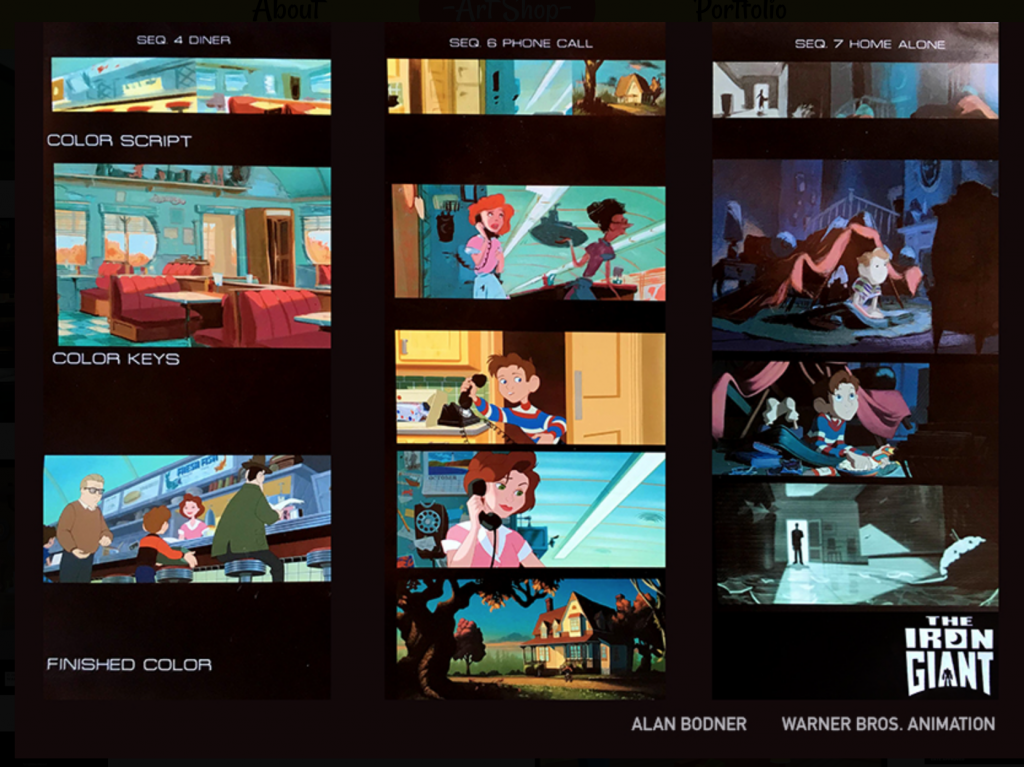
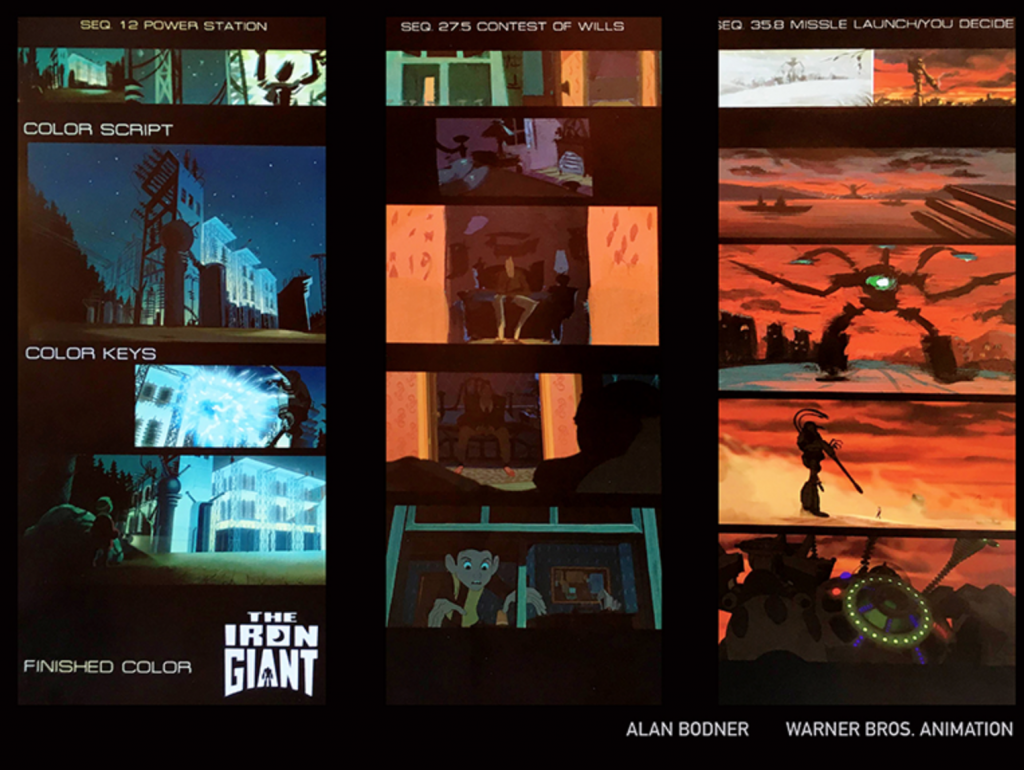
Alan continued his ascent to well-known and respected animation art director with Kim Possible in 2002 and 2003, art directing the first season, and laying the groundwork for the show’s visual palette. He went on to both create backgrounds for and art direct on Phineas and Ferb, and art direct the critically acclaimed Tangled series.
Most recently, he’s been art directing a new project on Disney Junior, Mickey Mouse Funhouse. It has been particularly rewarding for Bodner, because he was able to draw on his memories watching The Mickey Mouse Club as a kid when considering the styling and feel of the new show. As he told Jazz Tangcay of Variety, the bold colors used in 1951’s Alice in Wonderland were an inspiration for “Mickey the Brave”, the premiere episode of the series. You can watch Mickey Mouse Funhouse now on cable, or many of your streaming providers through Hulu + Live TV and DirecTV Stream. It’s perfect for little kids, and the colors are joyful and eye-popping.
All this background about Alan’s storied career should make it clear why we’re so exciting to be able to get art representing him for our clients. The artist has a singular style and vision that’s super fun and joyful but also harkens back to the look of the great movie poster artist Saul Bass and other famed mid-century modern masters. He himself says he has been very influenced by the art of Warner Bros. background artist Maurice Noble, and you can see how he’s expanded upon that influence and made it his own.
You can see his cheeky, fun, but utterly authentic aesthetic in the collection of his art available through the gallery.

Alan will continue to create visual worlds for Disney and other studios in the coming years, so it’s exciting to know you can get both original and limited edition art from this award-winning animation insider.
Prices and timing for commissions have not yet been ironed out, but do start thinking about what might groove you. Alan also creates some art in 3D, and those pieces are a sight to behold!
The program is starting with this first release, but there are lots of other wonderful pieces coming soon, all of which you can see on Alan Bodner’s website. That site offers the opportunities to buy other collateral products like phone cases, pillows, shower curtains, and a host of other cool doodads that you’d be buying directly from Alan, so by all means, check all out. Here’s a link to a lot of other images from classic tv, many of which will be turned into limited editions as the program catches wind. Honestly, I can’t wait for the Adams Family piece to premiere! There are lots of other categories, like music and Broadway, but I’m a Little Shop of Horrors fan from way back, so that’s my favorite for sure. His website also has more info about his career and projects. You can explore HIS WEBSITE HERE.
If the above images spark joy in your heart, contact us soon. We have low numbers for these new limiteds right now, and can deliver them quickly, but who knows how fast they’ll go? He’s pretty great, and at the very least the Rat Pack and Fab Five images will blow through and sell out soon!
Lastly, please contact us if you’ve already figured out what you might want as a commission, because we can put you on the waiting list. He still works full time with the studios, and doesn’t have unlimited time to create these beauties!

